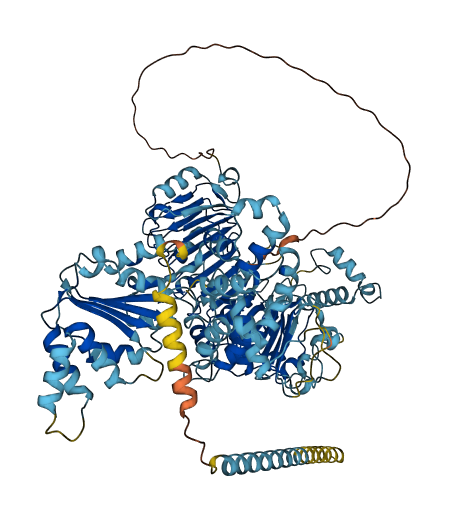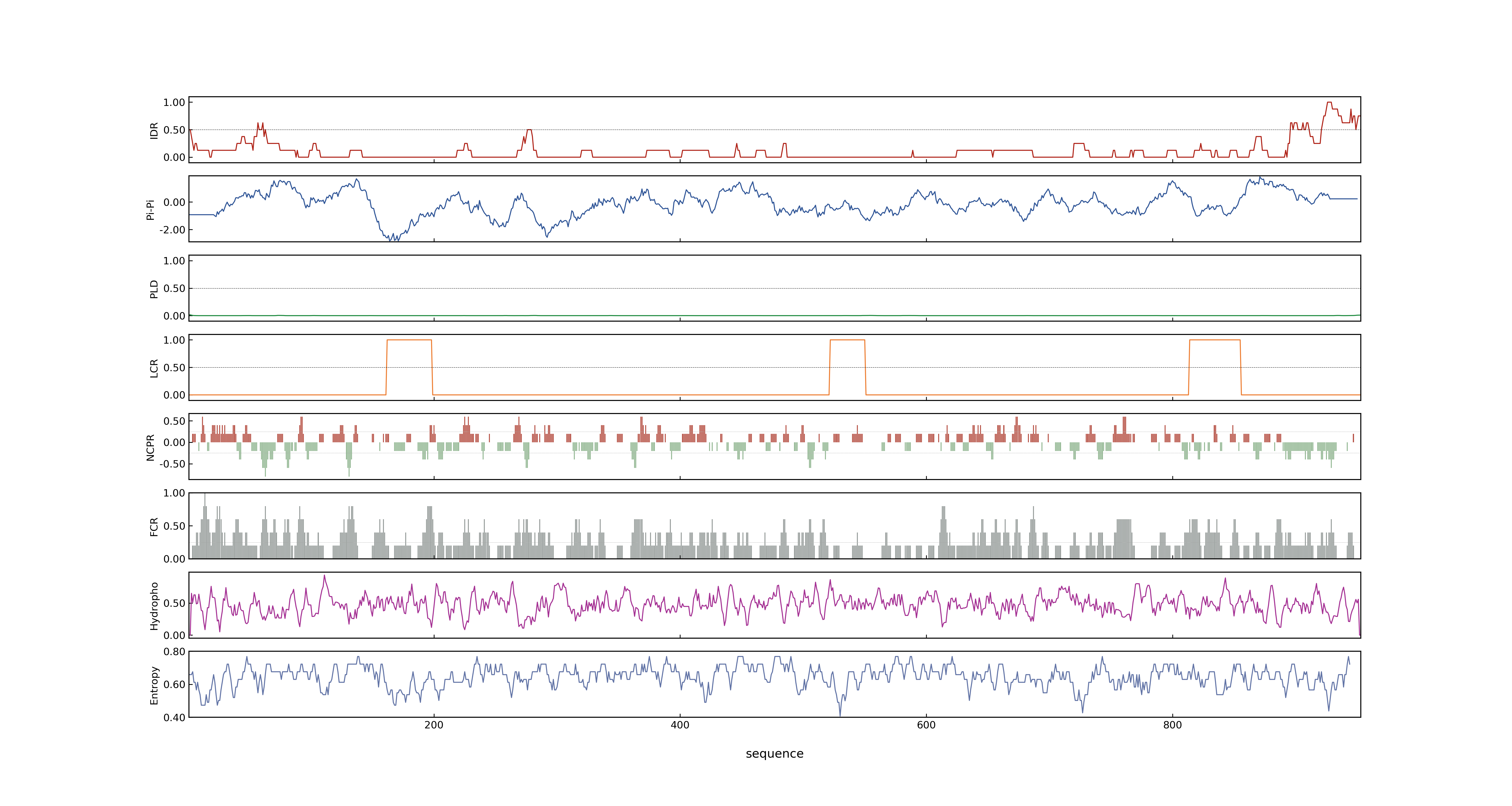- Information
- Symbol: Pi9,Piz-t,Pi2
- MSU: LOC_Os06g17900
- RAPdb: Os06g0286700
- PSP score
- LOC_Os06g17900.1: 0.1445
- PLAAC score
- LOC_Os06g17900.1: 0
- pLDDT score
- 81.33
- Protein Structure from AlphaFold and UniProt
- MolPhase score
- LOC_Os06g17900.1: 0.99631989
- MolPhase Result
- Publication
- Identification of a new rice blast resistance gene, Pid3, by genomewide comparison of paired nucleotide-binding site–leucine-rich repeat genes and their pseudogene alleles between the two sequenced rice genomes, 2009, Genetics.
- The broad-spectrum blast resistance gene Pi9 encodes a nucleotide-binding site-leucine-rich repeat protein and is a member of a multigene family in rice, 2006, Genetics.
- Molecular breeding of thermo-sensitive genic male sterile TGMS lines of rice for blast resistance using Pi2 gene., 2015, Rice (N Y).
- Allele-specific marker-based assessment revealed that the rice blast resistance genes Pi2 and Pi9 have not been widely deployed in Chinese indica rice cultivars., 2016, Rice (N Y).
- Allele Mining and Selective Patterns of Pi9 Gene in a Set of Rice Landraces from India., 2016, Front Plant Sci.
-
Genbank accession number
- Key message
- The broad-spectrum rice blast resistance gene Pi9 was cloned using a map-based cloning strategy
- The cloned Pi9 gene provides a starting point to elucidate the molecular basis of the broad-spectrum disease resistance and the evolutionary mechanisms of blast resistance gene clusters in rice
- The broad-spectrum blast resistance gene Pi9 encodes a nucleotide-binding site-leucine-rich repeat protein and is a member of a multigene family in rice
- Semiquantitative reverse transcriptase (RT)-PCR analysis showed that Pi9 was constitutively expressed in the Pi9-resistant plants and was not induced by blast infection
- Disease evaluation of the transgenic lines carrying the individual candidate genes confirmed that Nbs2-Pi9 is the Pi9 gene
- Molecular breeding of thermo-sensitive genic male sterile (TGMS) lines of rice for blast resistance using Pi2 gene.
- In this study, we report the introgression of a rice blast resistance gene Pi2 from VE6219 into C815S, an elite rice TGMS line, leading to the development of blast resistant TGMS lines through marker assisted selection (MAS) and phenotypic selection approaches
- Four new TGMS lines with blast resistance gene Pi2 were developed from C815S (an elite TGMS line susceptible to the blast, used as recurrent parent) and VE6219 (a blast resistant line harboring Pi2, used as donor parent)
- The broad-spectrum and durable rice blast resistant gene Pi2 was introgressed into the elite TGMS line C815S background
- Allele-specific marker-based assessment revealed that the rice blast resistance genes Pi2 and Pi9 have not been widely deployed in Chinese indica rice cultivars.
- The Pi2 and Pi9 genes confer broad-spectrum resistance against diverse blast isolates
- Development of allele-specific markers for Pi2 and Pi9 would facilitate breeding of blast resistant rice by using the two blast resistance genes
- Of the 434 accessions tested, while one indica restorer line Huazhan was identified harboring the Pi2 resistance allele, no other rice line was identified harboring the Pi2 or Pi9 resistance alleles
- The two newly developed markers should be highly useful for using Pi2 and Pi9 in marker-assisted selection (MAS) breeding programs
- In this work, we developed two new markers, named Pi9-Pro and Pi2-LRR respectively, targeting the unique polymorphisms of the resistant and susceptible alleles of Pi2 and of Pi9
- Allelic variants of the broad-spectrum blast resistance gene, Pi9 (nucleotide binding site-leucine-rich repeat region) have been analyzed in Indian rice landraces
- Six of them were further selected on the basis of their resistance and susceptible pattern for virulence analysis and selective pattern study of Pi9 gene
- All the blast resistance Pi9 alleles were grouped into one cluster, whereas Pi9 alleles of susceptible landraces formed another cluster even though these landraces have a low level of DNA polymorphisms
- Connection
- APIP10, Pi9~Piz-t~Pi2, The E3 Ligase APIP10 Connects the Effector AvrPiz-t to the NLR Receptor Piz-t in Rice., The E3 Ligase APIP10 Connects the Effector AvrPiz-t to the NLR Receptor Piz-t in Rice.
- APIP10, Pi9~Piz-t~Pi2, The E3 Ligase APIP10 Connects the Effector AvrPiz-t to the NLR Receptor Piz-t in Rice., Conversely, silencing of APIP10 in the Piz-t background causes cell death, significant accumulation of Piz-t, and enhanced resistance to M
- APIP10, Pi9~Piz-t~Pi2, The E3 Ligase APIP10 Connects the Effector AvrPiz-t to the NLR Receptor Piz-t in Rice., oryzae, suggesting that APIP10 is a negative regulator of Piz-t
- APIP10, Pi9~Piz-t~Pi2, The E3 Ligase APIP10 Connects the Effector AvrPiz-t to the NLR Receptor Piz-t in Rice., We show that APIP10 promotes degradation of Piz-t via the 26S proteasome system
- APIP10, Pi9~Piz-t~Pi2, The E3 Ligase APIP10 Connects the Effector AvrPiz-t to the NLR Receptor Piz-t in Rice., Together, our results show that APIP10 is a novel E3 ligase that functionally connects the fungal effector AvrPiz-t to its NLR receptor Piz-t in rice
- APIP5~OsbZIP53, Pi9~Piz-t~Pi2, Immunity to Rice Blast Disease by Suppression of Effector-Triggered Necrosis., Conversely, Piz-t interacts with and stabilizes APIP5 to prevent necrosis at the necrotrophic stage
- APIP5~OsbZIP53, Pi9~Piz-t~Pi2, Immunity to Rice Blast Disease by Suppression of Effector-Triggered Necrosis., At the same time, APIP5 is essential for Piz-t stability
- APIP12, Pi9~Piz-t~Pi2, The Nup98 Homolog APIP12 Targeted by the Effector AvrPiz-t is Involved in Rice Basal Resistance Against Magnaporthe oryzae., It is worth noting that neither knockout/knockdown nor overexpression of APIP12 attenuates Piz-t resistance
Prev Next

